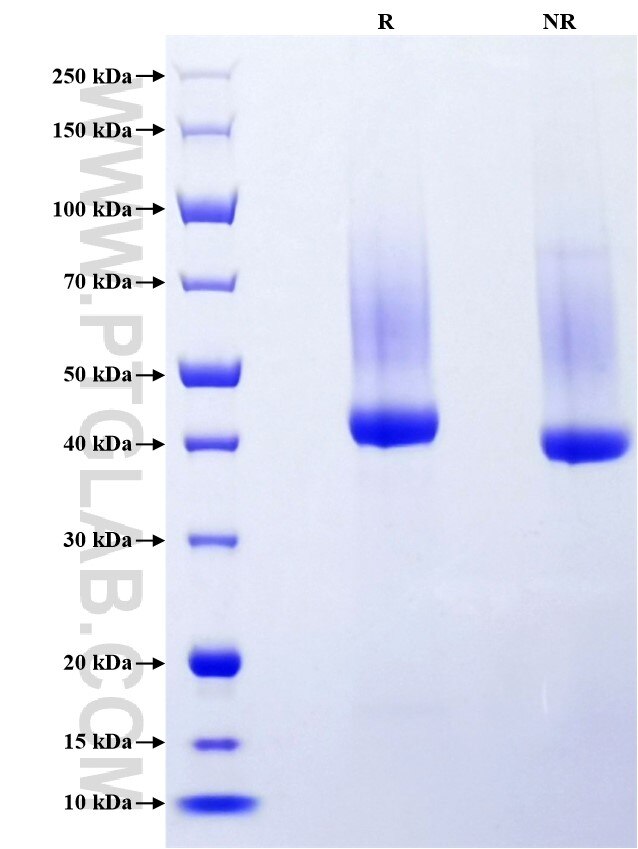Recombinant Rat AGER/RAGE protein (His Tag)
Species
Rat
Purity
>90 %, SDS-PAGE
Tag
His Tag
Activity
not tested
Cat no : Eg1135
Validation Data Gallery
Product Information
| Purity | >90 %, SDS-PAGE |
| Endotoxin | <0.1 EU/μg protein, LAL method |
| Activity |
Not tested |
| Expression | HEK293-derived Rat AGER protein Gly23-Leu341 (Accession# Q63495) with a His tag at the C-terminus. |
| GeneID | 81722 |
| Accession | Q63495 |
| PredictedSize | 34.9 kDa |
| SDS-PAGE | 40-45 kDa, reducing (R) conditions |
| Formulation | Lyophilized from 0.22 μm filtered solution in PBS, pH 7.4. Normally 5% trehalose and 5% mannitol are added as protectants before lyophilization. |
| Reconstitution | Briefly centrifuge the tube before opening. Reconstitute at 0.1-0.5 mg/mL in sterile water. |
| Storage Conditions |
It is recommended that the protein be aliquoted for optimal storage. Avoid repeated freeze-thaw cycles.
|
| Shipping | The product is shipped at ambient temperature. Upon receipt, store it immediately at the recommended temperature. |
Background
Advanced glycosylation end product-specific receptor (AGER, also known as RAGE) is a member of the immunoglobulin superfamily of cell surface receptors, which interacts with distinct families of ligands, mediating diverse functions in a broad array of cell types including cellular migration, proliferation, survival and apoptosis. It senses endogenous stress signals with a broad ligand repertoire including advanced glycation end products, S100 proteins, high-mobility group box 1 protein/HMGB1, amyloid beta/APP oligomers, nucleic acids, phospholipids and glycosaminoglycans. It interacts with distinct molecules implicated in homeostasis, development, inflammation, and certain diseases such as diabetes and Alzheimer's disease.
References:
1.Donato, R. et al. (2003) MICROSC RES TECHNIQ. 60(6):540-51. 2.Yan, SF.et al. (2007) CURR DIABETES REP. 7(2):146-53. 3.Tsoporis, JN. et al. (2010) CIRC RES. 106(1):93-101. 4.Xie, Y. et al. (2017) MOL MED REP. 16(2):1691-1700. 5.Daffu, G. et al. (2015) DIABETES. 64(12):4046-60.

